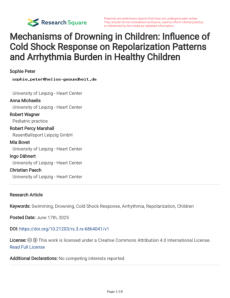Scientific papers 2025







Click on the octopus
to return to the top
of the page



01 - Cellular Mechanisms of Oxygen Transport Hemoglobin
Dynamics
Authors:
Indunil Karunarathna, Sanjeewa Dius, R Ranwala, Sau
Bandara, Sanjaya Godage, PN Rodrigo, Asoka
Jayawardana, U Vidanagama, Cam Fernando, Upul
Ekanayake, T Hapuarachchi, Prasanna Gunasena, P
Aluthge, Nihal Perera , Senaka Gunathilake, Kapila De
Alvis , Kapila Gunawardana, Samadi Rajapaksha, A
Warnakulasooriya , P Athulgama
Student performance is key for solving learning issues and
measuring outcomes. This paper suggests a machine
learning method to predict student performance in online
learning by analyzing eleven behavioral indicators. Results
highlight the link between students' learning initiative and
duration, significantly impacting performance prediction.
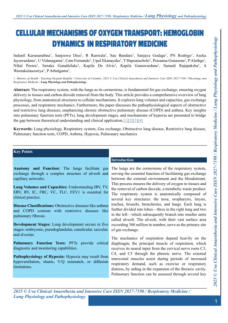



02 - Machine learning approach to student performance prediction
of online learning.
Author: Jing Wang, Yun Yu
Student performance is important for solving learning
problems and measuring outcomes. This paper presents a
machine learning method to predict student performance
in online learning. Eleven behavioral indicators are
analyzed, filtering out weakly correlated ones. The logistic
regression model shows better prediction ability,
highlighting the link between student initiative, learning
duration, and performance.
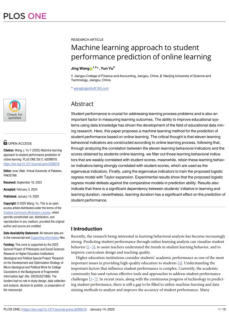



03 - Therapeutic delivery of oxygen using artificial oxygen carriers
demonstrates the possibility of treating a wide range
of diseases.
Authors: Nijaya Mohanto, Himangsu Monda, Young-
Joon Park, and Jun-Pil Jee
Artificial oxygen carriers may replace red blood cells in
cases of significant blood loss from accidents, surgeries,
trauma, and more. They show promise for treating various
diseases. There is a need for stable, non-toxic carriers amid
challenges. This paper reviews different types of artificial
carriers, their effects, and ongoing research.
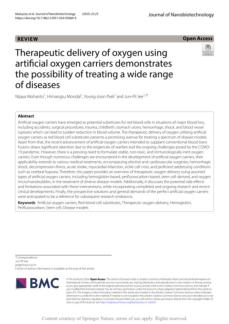



04 - An Overview of Rebreather Trimix Diving Practices in France
and Self-reported Accidentology.
Authors: E. Gouin, F. Guerrero, J-É. Blatteau
This study assessed practices and accidents in trimix
rebreather diving. An anonymous survey was shared with
certified trimix divers in France, gathering data on
demographics, planning, and abnormal symptoms during
dives. Results showed a predominantly male population
with high certification levels. Many divers experienced gas
toxicity symptoms and decompression incidents. The study
highlights the need for better data and continued
research on decompression and its physiological effects.
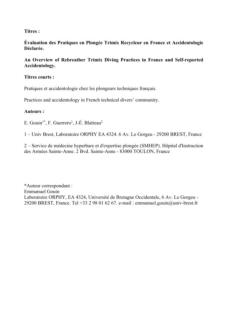



05 - In-water Electrical Impedance Tomography: EIT and the Sea
Author: Andy Adler, Tarek el Harake, Martina Mosing,
Andreas Fahlman
Electrical impedance tomography (EIT) can provide
valuable information on ventilation in humans and land
mammals, particularly in sea mammals and human divers.
However, in-water use is challenging due to the
conductive nature of sea water. This study demonstrates
that EIT can produce reasonable images with an outer
insulating layer and custom belts, demonstrating its
feasibility with appropriate techniques.
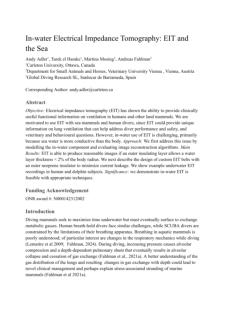



06 - Hydrogen and oxygen isotopes in vertebrate tissues vary by diet
type
Authors:
Linda M. Reynard, Jennifer N. Leichliter, Daniela E.
Winkler, Marcus Clauss, and Thomas Tütken
This study investigates the isotopic variation in diet
components and diet type across different taxa in rats,
guinea pigs, and quail. The diet to tissue offsets for d2H
and d18O of tissue-bound organic matter in muscle and
dentine collagen were found to vary by diet type. The
study also found large variation in Dd2H and Dd18O by
tissue type and moderate differences by species. This
isotopic variability is crucial for studies such as migratory
research, diet reconstructions, and climate inferences,
especially in species with varying dietary habits.
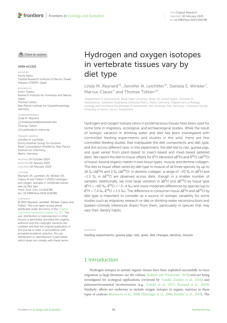



07 - Divergent thinking in groups during cold-water immersion is
impaired by cold stress not the cold shock response
Authors:
Max Kailler Smith, Rebecca Weller, Tony Duong, Rebecca
McClintock, Matthew Peterson, Nathaniel Barr,
Douglas M. Jones, and Timothy L. Dunn
Examining the impact of cold shock response on higher-
level thinking in active duty service members during a 13-
minute cold-water immersion revealed no relationship
between the magnitude of cold shock response and DAT
performance. However, those with lower skin
temperatures performed worse on the Divergent
Association Task. This study suggests that the ability to
engage in divergent thinking is relatively preserved during
the critical ~10-minute window, although skin cooling
may bias attention toward cold stress, affecting task
performance.
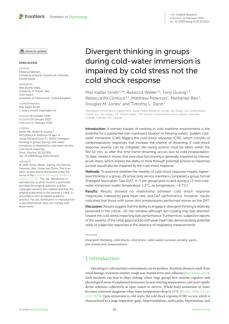



08 - The Impact of Recreational Diving to a Depth of 40 m on
Selected Intracellular DAMPs
Authors:
Anna Nowakowska, Małgorzata Marchelek-My´sliwiec,
Marta Skórka-Majewicz, Wojciech ˙Zwierełło, Konrad
Grzeszczak, and Izabela Gutowska
Recreational diving, a popular activity under extreme
environmental conditions, can induce increased levels of
reactive oxygen and nitrogen species in the body,
potentially modulating damage-associated molecular
patterns (DAMPs), their receptors, and antioxidant
response. Diving also influenced the expression of genes
encoding key enzymes associated with glutathione
synthesis and reduced plasma glutathione levels.
However, the study found that key inflammation-related
molecules (NF-rB, NOS2, TLR4, RAGE) did not change
significantly.
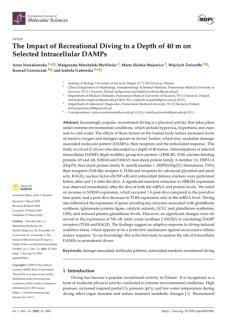


09 - Measuring the research productivity on environmental
toxicology: A scientometric study
Authors: Shanmuganathi Ayyankalai, Srinivasaragavan
Subburaj, Prasanna Kumari Nataraj
This paper analyzes the growth and development of
Environmental Toxicology literature, revealing 6,663
publications in 2022, with 183279 Citations. The most
productive countries are the USA, China, Germany,
Canada, and England. Highly cited journals include
Environmental Toxicology and Chemistry, Integrated
Environmental Assessment and Management,
Environmental Health Perspectives, and Toxicological
Sciences.
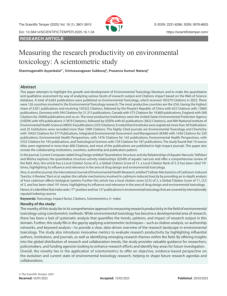



10 - The Impact of Recreational Diving to a Depth of 40 m on
Selected Intracellular DAMPs
Authors:
Anna Nowakowska, Małgorzata Marchelek-Mysliwiec,
Marta Skórka-Majewicz, Wojciech ˙Zwierełło, Konrad
Grzeszczak, and Izabela Gutowska
Recreational diving can affect the body due to extreme
conditions, such as high oxygen and pressure, which
increase reactive oxygen and nitrogen species. A study
involving 21 divers at a depth of 40 meters analyzed
various intracellular damage markers before and after
diving. There was a significant decrease in molecules
released by cells in response to stress, injury, or
inflammation, one hour later, indicating an adaptive
response to oxidative stress.
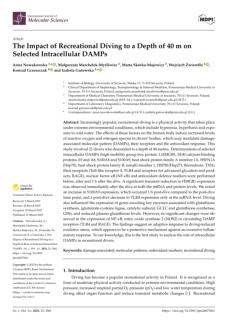

Authors: Sandra Arhesa, Amung Ma’mun, Boyke
Mulyana, Nina Sutresna, Silvia Agustin
This study explores the freediving abilities of the Bajo
people in Wakatobi, Indonesia. Using a qualitative case
study approach, data was collected from 20 informants.
Thematic analysis revealed key aspects of Bajo diving,
including factors influencing performance, specific
techniques, dive duration and depth, training methods,
and traditional equipment. The study highlights the
profound interaction between the marine environment
and socio-cultural practices, distinguishing traditional
methods from modern practices. The study concludes
that this diving culture needs preservation and health
education.


11 - Case study on the diving ability of the Bajo tribe in Indonesia
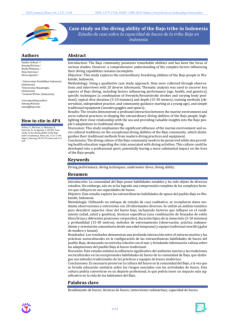

Author:
Ahmet Sedat Dünda, Mucahit Oruç, Osman Celbis, Emine
Türkmen samdancı, Ayse Nur Akatlı, Hasan Okumus,
Çasatay Taskapan, Onural Özhan, Hakan Parlakpınars
The study aimed to determine the cause of deaths
associated with electric shock, particularly those formed
with water conduction. It involved 42 rats and examined
serum NT-ProBNP, H-FABP levels, histopathological
changes, and antibody status in various tissues. The results
showed a significant difference between groups in serum
H-FABP values and immunohistochemical staining. This
study is the first in literature to use an experimental model
of electric shock with water conduction.


12 - An experimental rat model of electric shock injury with isolated
electric shock and water conduction: the histopathological
changes on the skin and internal organs and the effect on
biochemical Parameters.
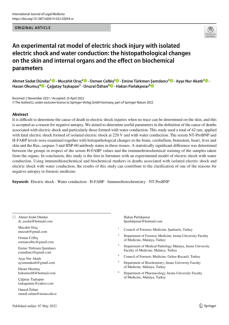



13 - An EPHA2-centered gene regulatory network associates with
hyperbaric oxygen treatment response in perianal fistulizing
Crohn’s disease patients

Authors:
I.C.N Fung, L.G.M. Mulders, R. Weiss, I.A.M van Thiel, K.J.
Beek , I. Admiraal, C. Verseijden, J. Verhoeff, M. Zwart, M.L.
Ridderikhof, J. Tielbeek, J. Stoker, R.A. van Hulst, C.J.
Buskens, M.E. Wildenberg, K.B. Gecse , A.Y.F. Li Yim, W.J.
de Jonge, G.R. D’Haens
Perianal fistulizing Crohn's disease (PFCD) is a severe
Crohn's disease complication with low long-term
remission rates. Hyperbaric oxygen therapy (HBOT) has
been used as an adjunct therapy to reduce disease
activity and improve surgical closure.
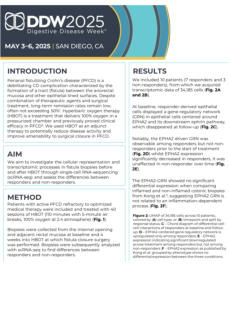


14 - Diving into discomfort: orofacial pain dynamic: A systematic
Review

Authors: Lubna A. Alolaiwi, Fawziah A. Alzahrani, and
Sulaiman A. AlShammari
This study investigates the prevalence of orofacial pain
among divers, focusing on military, occupational, and
recreational divers. A systematic literature search
revealed that barodontalgia had the highest prevalence
rate among the four types of orofacial pain, ranging
from 10.8% to 56.1%. Periodontal issues had the lowest
rate, ranging from 2.8 to 6.6%. Military divers were most
affected by all types of pain. The study emphasizes the
need for tailored preventive strategies, including dental
care, ergonomic interventions, oral hygiene education,
equipment fitting, and clenching management.
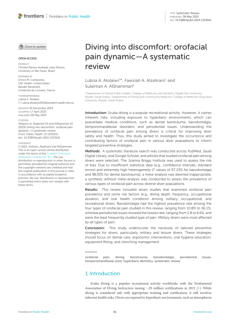



15 - Extremely deep bounce dives: planning and physiological
challenges based on the experiences of a sample of French-
speaking technical Divers

Authors: Emmanuel Gouin, Emmanuel Dugrenot,
Bernard Gardette
This study explores the limits of extreme-depth diving and
strategies developed to overcome them. Eight
experienced rebreather divers were interviewed about
their preparation, planning, and execution of such dives.
The results showed that gas density, oxygen exposure,
and ascent rate exceeded current recommendations.
High pressure nervous syndrome was not a major limiting
factor, but decompression posed greater challenges.
Decompression procedures must be adapted for these
demanding mixed-gas dives, and a dry underwater
habitat could improve decompression tolerance. The role
of hydrogen as a breathing gas remains uncertain.
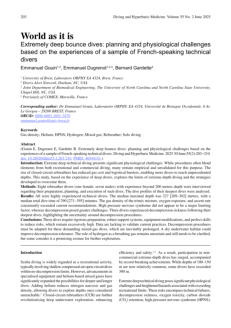


16 - Diving practices in technical divers’ community and behaviour
towards self-reported unusual symptoms
Authors: Emmanuel Gouin, David PM Monnot, Thierry
Michot, François Guerrero, Jean-Éric Blatteau
The use of gas mixtures containing helium for deep
recreational diving is becoming more common, but its
risks remain poorly documented. A study analyzed 558
questionnaires from certified trimix divers, revealing that
42.2% reported medical risk factors related to diving.
Rebreather use was prevalent, and decompression was
primarily managed using compartmental models. Dive
planning varied among individuals, and gas density at
depth often exceeded current recommendations.
Decompression sickness or breathing symptoms were
common, but no treatment was initiated. The study
suggests continued research into decompression and
physiological effects, as well as awareness and education
efforts in diving first aid.
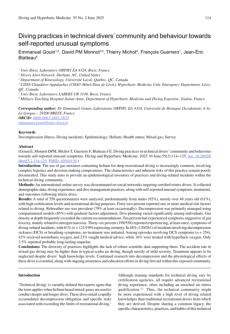


17 - Mechanisms of Drowning in Children: Influence of Cold Shock
Response on Repolarization Patterns and Arrhythmia Burden in
Healthy Children.

Authors: Sophie Peter
The study examines the effects of cold shock response in
healthy children during immersion into cold water.
Participants were immersed in warm water and then cold
water, measuring their heart rate, heart rate, and
respiratory rate. Results showed lower heart rate variability
parameters in cold water, shorter Tp-Te intervals, and
inadequate QT interval adaptation. No arrhythmias were
detected in healthy children, but the cold shock response
could induce repolarization abnormalities in individuals
with pre-existing conditions. This study provides the first
data on drowning mechanisms in children.
